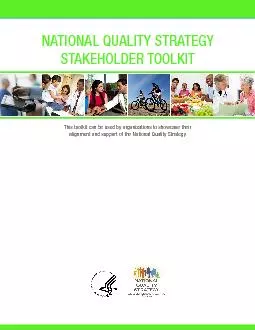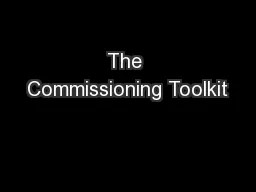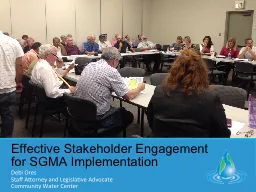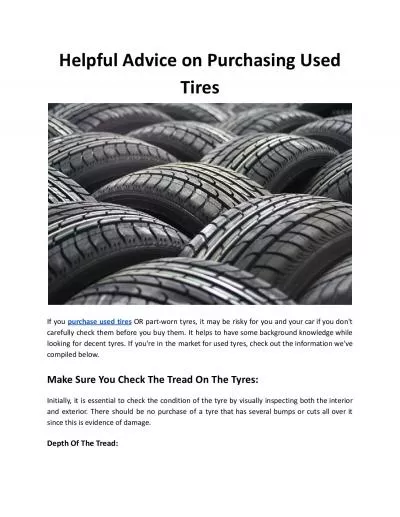PDF-NATIONAL QUALITY STRATEGY STAKEHOLDER TOOLKITThis toolkit can be used
Author : luanne-stotts | Published Date : 2017-11-22
1 INTRODUCTIONThis Stakeholder Toolkit can be used by private and public organizations to advance the mission of the National Quality Strategy NQS This toolkit contains
Presentation Embed Code
Download Presentation
Download Presentation The PPT/PDF document "NATIONAL QUALITY STRATEGY STAKEHOLDER TO..." is the property of its rightful owner. Permission is granted to download and print the materials on this website for personal, non-commercial use only, and to display it on your personal computer provided you do not modify the materials and that you retain all copyright notices contained in the materials. By downloading content from our website, you accept the terms of this agreement.
NATIONAL QUALITY STRATEGY STAKEHOLDER TOOLKITThis toolkit can be used: Transcript
Download Rules Of Document
"NATIONAL QUALITY STRATEGY STAKEHOLDER TOOLKITThis toolkit can be used"The content belongs to its owner. You may download and print it for personal use, without modification, and keep all copyright notices. By downloading, you agree to these terms.
Related Documents














